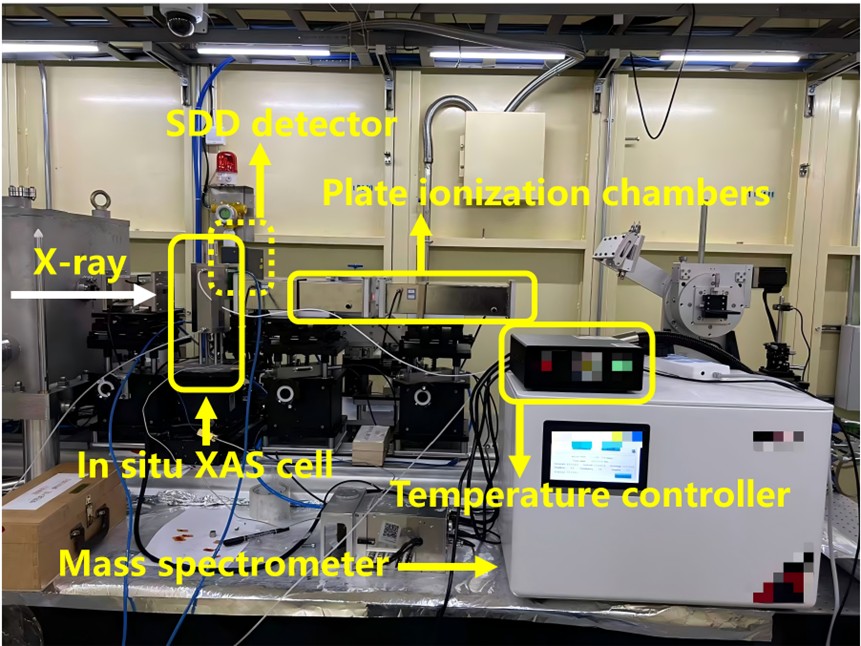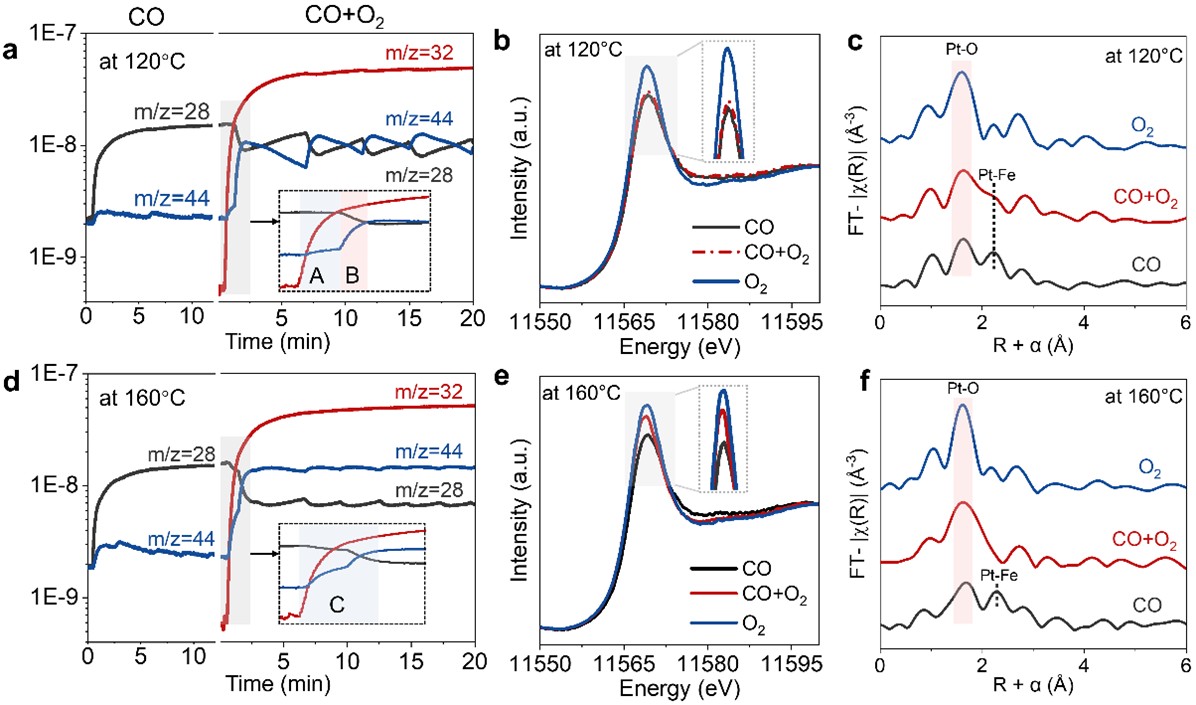Research Progress
Platinum, owing to its high catalytic activity and thermal stability, is widely used in fields such as automotive exhaust purification. Pt single-atom-sites catalysts can maximize atomic utilization while minimizing the use of precious metals. Addressing the challenges related to the activity and stability could unlock broad application prospects for these catalysts.
A research team led by Dr. GAN Tao and Prof. LI Jiong from Shanghai Synchrotron Radiation Facility (SSRF) Science Center of Shanghai Advanced Research Institute, Chinese Academy of Sciences, have developed a high-performance catalyst by anchoring oxidized platinum single atoms on La-vacancy LaFeO₃ via a defect-engineering strategy. The catalyst delivers efficient low-temperature CO oxidation without reduction pretreatment and shows remarkable stability.
The findings were published in the Journal of the American Chemical Society.
To uncover the reaction mechanism, the team built an in situ XAFS–MS hyphenation device at the BL11B beamline of SSRF. Their study reveals that Pt single-atom-sites act as the active sites and that interfacial oxygen between v-LaFeO₃ and Pt directly participates in the reaction. CO combines with this interfacial oxygen to form CO₂, while the consumed oxygen species are rapidly replenished through O₂ dissociation around Pt sites.
Although the coordination environment of Pt changes dynamically during the oxygen cycle, its oxidation state and high-coordination structure remain intact, preventing reduction, aggregation, or over-oxidation. This work provides a clear solution to the long-standing challenge of balancing activity and stability in Pt single-atom catalysts (SACs) for catalytic oxidation.

Figure 1. Layout of the in situ XAFS–MS experimental setup (Image by SARI)

Figure 2. Reaction mechanism analyzed by in situ XAFS–MS technique (Image by SARI)
In addition, the developed XAFS–MS hyphenation technique offers a powerful tool for investigating structure–activity relationships in other catalytic processes. The in situ XAFS–MS hyphenation technique enables simultaneous capture of the structural evolution and activity changes of catalysts within the same spatial and temporal dimensions, overcoming the long-standing limitation of separating structural characterization from activity analysis in conventional studies.
This approach provides a key technical foundation for in-depth investigation of structure–activity relationships in catalytic reactions.





